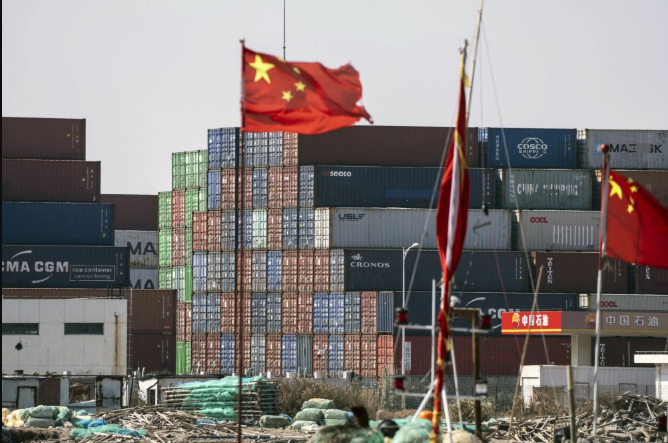In a dramatic escalation of the trade conflict between the world’s two largest economies, China has announced retaliatory tariffs of 34% on all US imports.
The move, confirmed by China’s State Council, comes in direct response to President Donald Trump’s imposition of additional tariffs on Chinese goods, announced on April 2nd.
The Chinese tariffs are set to take effect on April 10th, one day after the US measures are implemented.
A spokesperson for China’s Ministry of Commerce condemned the US tariffs as “subjective and unilateral,” arguing they violate international trade rules and represent “a typical practice of unilateral bullying.”
The escalating trade war threatens to disrupt multiple shipping sectors and trigger widespread economic repercussions.
The sheer volume of trade between the two nations underscores the potential impact. In 2024, US-China goods trade reached $582.4 billion, with US imports from China alone totaling $438.9 billion, according to the USTR. This massive trade flow is now at risk of significant disruption.
Already grappling with potential fees on Chinese-built ships in US ports, the container shipping industry faces a potential drop in US demand for Chinese goods like electronics and consumer products. In February 2025, the US imported 872,779 TEU from China, representing 39% of all US container imports.
Agricultural imports, a significant component of China’s US trade, are particularly vulnerable. China imported $24.65 billion in US agricultural products in 2024. The dry bulk market, especially panamax and supramax segments, is expected to be negatively impacted, with China likely seeking alternative suppliers for grains, coal, and petcoke.
China’s retaliatory measures also target US energy exports, including LNG, crude oil, and coal. While China halted US LNG imports in February, the existing tariffs on steel and aluminum pose risks to US LNG project construction.
The tanker trade, according to Bimco, may see China shift to alternative oil suppliers like OPEC and Brazil.
The US agricultural sector is also poised to suffer significant losses. China, despite recent declines, remains a major market for US agricultural exports.
In 2024, the US exported $12.84 billion worth of soybeans to China, representing over half of total US soybean exports. The trade war exacerbates existing challenges for US soybean exporters, who already face stiff competition from South American producers.
China’s announcement sent shockwaves through global stock markets. On April 4th, major indices like the UK’s FTSE 100, Germany’s Dax, and the US Dow Jones Industrial Average experienced significant declines.
Shipping analysts predict the tariffs will negatively impact trade between the US and China, hindering economic growth in both nations. The disruption of trade flows will likely lead to shifts in commodity sourcing, impacting tonne-mile demand and potentially triggering commodity price fluctuations.
The escalating trade war between the world’s two largest economies has set the stage for a period of uncertainty and potential economic disruption, with far-reaching consequences for global trade and shipping.
Copyright Ships & Ports Ltd. Permission to use quotations from this article is granted subject to appropriate credit given to www.shipsandports.com.ng as the source.
